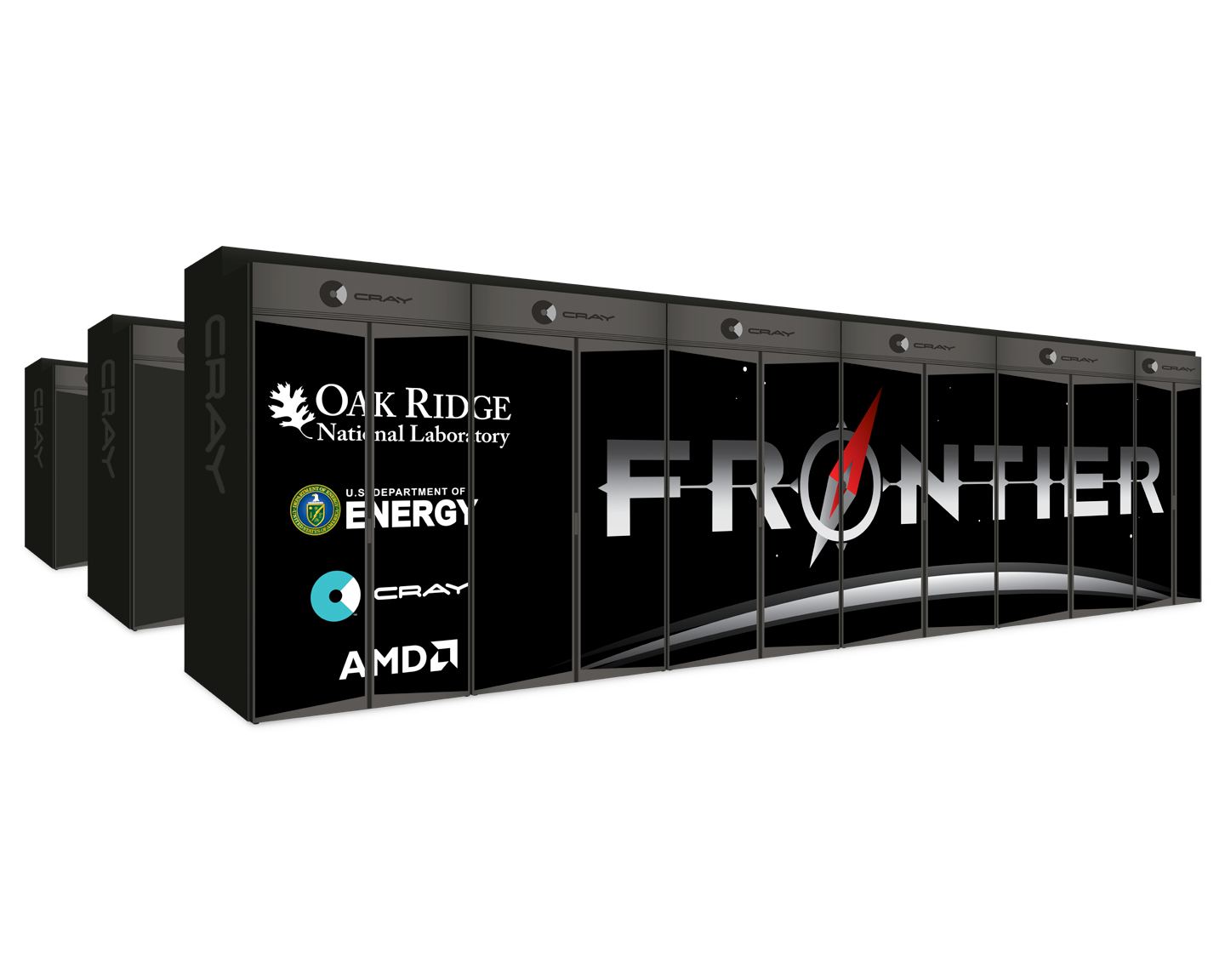Aurora (Intel-HPE): Website
Aurora, Argonne’s first exascale computer, features Intel’s Data Center GPU Max Series GPUs and Intel XEON Max Series CPUs with HBM, a CPU-GPU interconnect (PCI-e), the HPE Slingshot fabric system interconnect, and a Cray EX platform. Aurora features several technological innovations and includes a revolutionary I/O system – the Distributed Asynchronous Object Store (DAOS) – to support new types of machine learning and data science workloads alongside traditional modeling and simulation workloads.
The Aurora software stack includes the HPE HPCM software stack, the Intel oneAPI software development kit, and data and learning frameworks. Supported programming models include MPI, Intel OneAPI, OpenMP, SYCL/DPC++., Kokkos, RAJA, and others. HIP is supported via ChipStar/CHIP-SPV.
| Aurora System Configuration | |||
| Architecture | Intel/HPE | ||
| Node | 2 x 4th Gen Intel Xeon Max Series CPUs with HBM
6x Intel Data Center GPU Max Series
|
||
| Node Count | 10,624 | ||
| GPU Architecture | Intel Data Center GPU Max Series; Tile based, chiplets, HBM stack, Foveros 3d integration | ||
| Interconnect | HPE Slingshot 11; Dragonfly topology with adaptive routing
25.6 TB/s per switch, from 64-200 GB ports (25GB/s per direction) |
||
| File System | 230 PB, 31 TB/s (DAOS) | ||
| Peak Performance | ≥ 2EF DP peak | Aggregate System Memory | 20PB |
| Aggregate DDR5 Memory | 10.6PB | Aggregate CPU HBM | 1.3PB |
| Aggregate GPU HBM | 8.1PB | Node Memory Architecture | Unified memory architecture, RAMBO |
The most recent information on Aurora can be found at https://docs.alcf.anl.gov/aurora/machine-overview/




